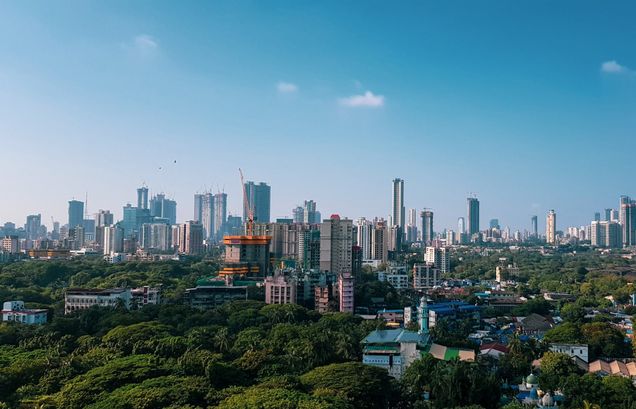Journal of Globalization and Development Special Issue – Task Force on Climate, Development and the IMF Round-Up

The biggest developmental challenge facing the world today is climate change and global warming. For keeping the world below the 1.5C threshold of global warming, it is necessary to end the rising emission before 2025. COP26 provided serious push towards this goal, where more than 130 countries committed to achieve net zero between 2050 and 2070. As an outcome, the energy transition away from fossil fuels is inevitable. Rapid, transformative green transitions will require an unprecedented mobilization of resources and investment, particularly for countries that rely on fossil fuels as a major source of revenue. So, it is certain that the energy transition will not happen without a significant fiscal transition. Also, climate change related policies that are adopted in one country can have significant macro-critical implications in other countries. Net zero transformations, therefore, require strong global support and coordination to maintain financial stability in the carbon intensive countries. Climate change and policy responses to climate change pose significant risks to financial and fiscal stability, poverty and inequality and the long-run growth prospects of the world economy. But to date, there has been limited attention paid to the fiscal transition and spillover risks that the world is going to face in the coming decades.
The Journal of Globalization and Development Special Issue on climate and development highlights the consequences of climate change on growth and debt sustainability, challenges posed by energy and fiscal transitions, and more.
Below, explore the suite of journal articles.
Climate Change Risks and Consequences on Growth and Debt Sustainability in Africa

Although Africa has contributed only 3.8 percent of total global emissions, it has borne the brunt of climate change. With a substantial lack of energy access in Sub-Saharan Africa, the continent must balance the need to combat climate change with an urgency to develop the continent’s economies to alleviate hunger and poverty, which are exacerbated by the impacts of climate shocks on agriculture.
A recent technical paper, part of a research series from the Task Force on Climate, Development and the International Monetary Fund, from researchers at the African Economic Research Consortium and the African Center for Economic Transformation explores the effects of climate change on growth, debt and sectoral output in Africa. Read the technical paper.
An Analysis of the International Monetary Fund’s International Carbon Price Floor Proposal

World leaders are facing a shrinking window to enact ambitious climate policies, as nationally determined contributions (NDCs) alone will not be enough to remain below the 2C global warming threshold.
With the goal of enhancing global climate action, the International Monetary Fund (IMF) proposed an international carbon price floor (ICPF) arrangement in 2021, developed from the global carbon price and designed to complement existing policy regimes by focusing on price floors, rather than price levels.
A recent technical paper from Ma Jun, He Xiaobei and Zhai Fan for the Task Force on Climate, Development and the IMF conducts an analysis of the burden-sharing effects of an ICPF arrangement, finding that, while the ICPF may be an efficient and effective means of reducing emissions, it would place additional responsibilities of emissions reductions, as well as additional economic costs, on developing countries. Read the technical paper.
India’s Energy and Fiscal Transition

At the 2022 United Nations Climate Change Conference in Glasgow, India’s Prime Minister Narendra Modi announced India will meet a target of net-zero emissions by 2070. Now, over the next few decades, India faces a significant energy transition, as fossil fuels account for a significant share of Indian government revenues.
Currently, the Indian government, both the Center and the States, imposes a multitude of taxes, cesses and duties on all fossil fuels. Moreover, non-tax revenues include royalties from domestic mining operations, as well as dividends from public sector fossil-fuel companies. These non-tax and tax revenues are considerable and have been growing steadily over time.
A recent technical paper from researchers at the Centre for Social and Economic Progress (CSEP) and members of the Task Force on Climate, Development and the International Monetary Fund identifies the fiscal challenges that will accompany India’s energy transition. It uses the International Energy Agency scenarios for India and studies how both tax revenues and non-tax revenues for national (Central) and sub-national (State) governments would be affected. Read the technical paper.
Economic and Fiscal Implications of Climate Change for Vulnerable Countries in Central America and the Caribbean

Climate vulnerable countries, such as those in Latin America and the Caribbean, are currently locked in a cycle of debt and climate: extreme weather events are driving up debt burdens, shrinking already-limited fiscal space and leading to higher costs of capital. Governments are left unable to adequately invest in adaptation measures or meet nationally determined contributions (NDCs), leading to increased losses and damages when disaster strikes.
How, then, can climate vulnerable countries both respond to climate impacts and invest in climate and development goals while maintaining fiscal stability?
A recent technical paper by researchers at the United Nations Economic Commission for Latin America and the Caribbean (UN-ECLAC), published by the Task Force on Climate, Development and the IMF, assesses the potential impact of climate change on economic growth and fiscal accounts for six Central American and Caribbean countries: Barbados, Dominican Republic, El Salvador, Guatemala, Honduras and Saint Lucia (CAC6). Read the technical paper.
Indices of Sustainability of Fiscal Policy Among the V20

In 2021, the Vulnerable Group of Twenty (V20) made a call for debt flexibility, invoking insufficient fiscal resources to finance responses to health and social crises caused by the COVID-19 pandemic as well as urgent investments in climate adaptation. The service of public debt crowds out crucial investments that countries require to climate-proof their economies and establish a resilient, sustainable and equitable recovery.
In a recent technical paper for the Task Force on Climate, Development and the International Monetary Fund, Toby Melissa C. Monsod, Justin M. Muyot and Maria Socorro Gochoco-Bautista explore the extent of the problem claimed by the V20 by estimating short- and medium-term indices of fiscal sustainability, following Blanchard et al. (1990), defined as the gap between an economy’s current tax rate and the tax rate which, if constant, would enable the debt-to-GDP ratio to return to its initial level. A climate change gap for the period 2021 to 2030 is also computed. Read the technical paper.
Never miss an update: Subscribe to the Task Force on Climate, Development and the IMF newsletter.